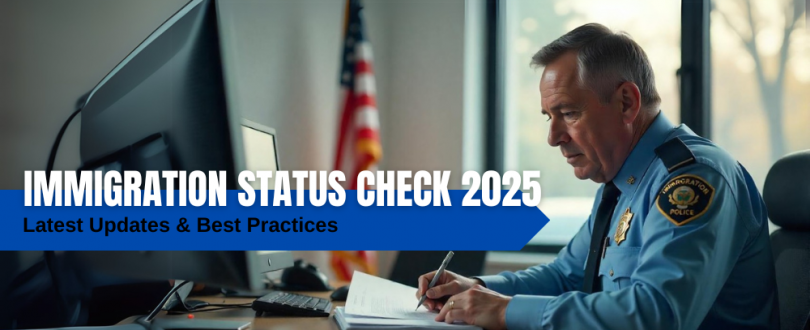
Hey there! If you’re navigating the U.S. immigration system in 2025, you’re probably feeling a bit overwhelmed. With recent policy shifts, new registration rules, and evolving enforcement practices, staying informed is more crucial than ever. Let’s break down the latest updates and share some practical tips to help you stay on top of your immigration status.
Major Immigration Policy Changes in 2025
1. Mandatory Registration for Non-Citizens
As of April 11, 2025, the Department of Homeland Security (DHS) requires certain non-U.S. citizens to register with U.S. Citizenship and Immigration Services (USCIS) if they haven’t already. This includes providing fingerprints and carrying proof of registration at all times. Failure to comply can result in federal misdemeanor charges.
Who Needs to Register?
– Non-citizens aged 14 and older who weren’t fingerprinted or registered during their visa application and plan to stay in the U.S. for 30 days or more.
– Children under 14 must be registered by a parent or legal guardian if they weren’t registered upon visa application and will remain in the U.S. for over 30 days.
– Previously registered children turning 14 while in the U.S. must re-register and provide fingerprints within 30 days after their 14th birthday.
Who Is Already Considered Registered?
– Lawful permanent residents (green card holders).
– Individuals issued immigrant or nonimmigrant visas before their last U.S. entry.
– Those admitted as nonimmigrants with an I-94 or I-94W form.
– Individuals paroled into the U.S., even if the parole period has expired.
– Those placed into removal proceedings by DHS.
– Individuals issued an Employment Authorization Document (EAD).
– Applicants for lawful permanent residence using specific forms, even if applications were denied.
– Holders of Border Crossing Cards.
Who Is Not Considered Registered?
– Individuals who entered the U.S. without inspection and admission or parole and haven’t registered.
– Canadians entering at land ports or ferry crossings without an I-94.
– Applicants for certain immigration reliefs who haven’t been issued evidence of status.
Exemptions:
– Officials of foreign governments and international organizations with A or G visas.
– Native Americans born in Canada with at least 50% American Indian blood.
– Foreign nationals staying in the U.S. for less than 30 days.
2. Increased Enforcement Actions
The current administration has intensified immigration enforcement, leading to a significant rise in arrests by U.S. Immigration and Customs Enforcement (ICE). This includes individuals with minor infractions and those with pending asylum applications. Such actions have heightened fear and uncertainty within immigrant communities.

Checking Your Immigration Status
Staying updated on your immigration status is essential. Here’s how you can do it:
1. USCIS Online Tools
USCIS offers several online tools to help you manage your case:
– Check Case Status: Monitor the progress of your application.
– Processing Times: Get estimated processing times for various forms.
– Change of Address: Update your address to ensure you receive all correspondence.
Access these tools at USCIS.gov.
2. Understanding the Visa Bulletin
The U.S. Department of State releases a monthly Visa Bulletin, which provides information on visa availability and priority dates. For instance, the May 2025 bulletin showed significant movement in the F-2A category (spouses and young children of U.S. green card holders), advancing by over three months across all countries.
3. Form I-485: Adjustment of Status
If you’re applying for a green card from within the U.S., you’ll likely use Form I-485. After filing, USCIS will schedule a biometrics appointment and, if necessary, an interview. You can check your case status online or contact the USCIS Contact Center at 800-375-5283.

Best Practices for Maintaining Your Immigration Status
1. Always Carry Proof of Status
Federal law requires non-citizens aged 18 and older to carry their registration documents at all times. Acceptable documents include:
– Permanent Resident Card (Green Card).
– Employment Authorization Document (EAD).
– Valid visa with an I-94 form.
Failure to carry these documents can result in fines or imprisonment.
2. Keep Your Information Updated
If you move, you must notify USCIS of your new address within 10 days by filing Form AR-11. Keeping your information current ensures you receive important notices and avoids potential issues.
3. Be Prepared for Travel
When traveling internationally, ensure you have:
– A valid passport.
– Appropriate visas or travel documents.
– Evidence of ties to the U.S., such as employment letters or property ownership.
For green card holders, avoid trips abroad lasting over 180 days without proper documentation, as it may raise concerns about abandoning U.S. residence.
4. Consult Legal Experts
Given the complexities of immigration laws and recent changes.
FAQs About Immigration Status Checks in 2025
Do I have to check my status even if I have a lawyer?
Yes. Your lawyer handles legal strategy, but you’re still the applicant. Double-checking won’t hurt—especially if your case drags on.
What if I’m undocumented—can I check anything?
Technically, no. But if you’ve had any contact with immigration enforcement (ICE, CBP, USCIS), you can file a FOIA request to get your records. It’s a bit slow, but it works.
Can I get alerts when something changes?
Yes, if you create a USCIS account and opt into notifications. The mobile app also lets you get push alerts.
Immigration Status & Travel in 2025: What to Watch
If you’re planning to travel outside the U.S., check your status first. You don’t want to get stuck abroad. Make sure:
– Your visa is valid for re-entry
– Your green card (or combo card) hasn’t expired
– You have Advance Parole if your adjustment of status is pending
CBP (Customs and Border Protection) also has a traveler history tool online. It can show your I-94 record and recent entries/exits: i94.cbp.dhs.gov

Wrapping Up: Stay Informed, Stay Ready
Immigration status checks aren’t exciting, but they’re critical. 2025 makes things a little easier thanks to better tech and more transparency from USCIS, but at the end of the day, you’re still your best advocate. Stay organized, set reminders, use the tools available, and ask questions when things seem off.
Need more help? Bookmark the USCIS tools page or consider joining an immigration forum like Trackitt or VisaJourney, where real people share real timelines and tips.
You’ve got this. And if you’re not sure where to start, start by logging in to your USCIS account and taking five minutes to check your case. One small habit now can save you a big headache later.
Resources & Links:
-
USCIS Case Status: https://egov.uscis.gov/casestatus
-
Processing Times: https://www.uscis.gov/processing-times
-
USCIS Online Account: https://myaccount.uscis.gov
-
FOIA Requests: https://www.uscis.gov/records/request-records-through-the-freedom-of-information-act-or-privacy-act
-
CBP I-94 Tool: https://i94.cbp.dhs.gov

